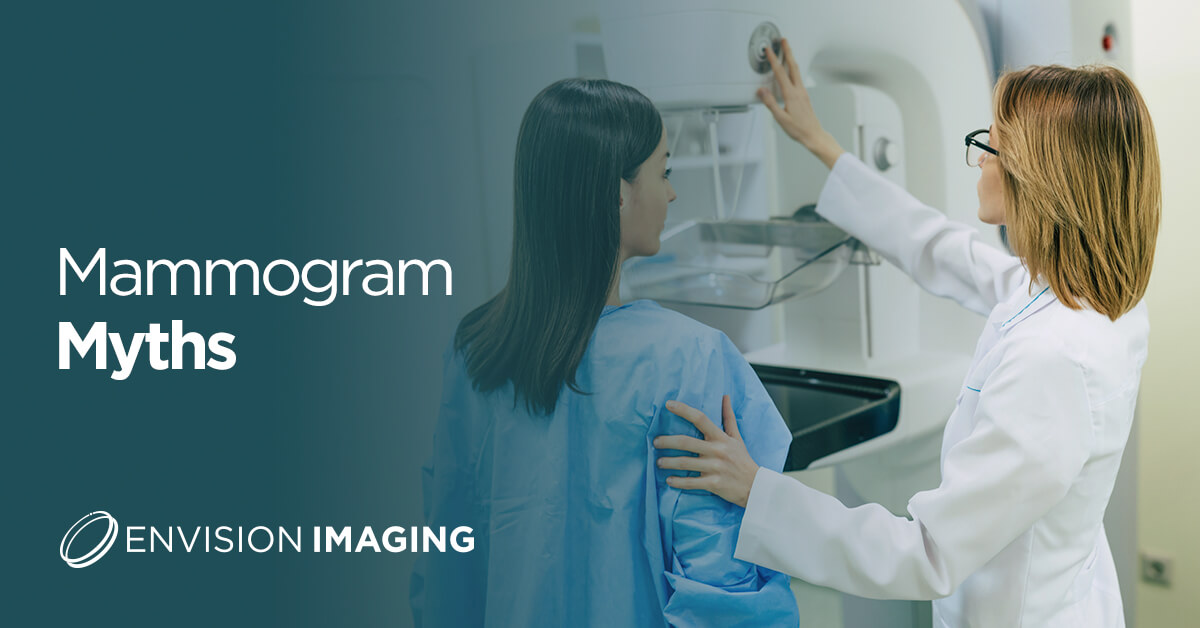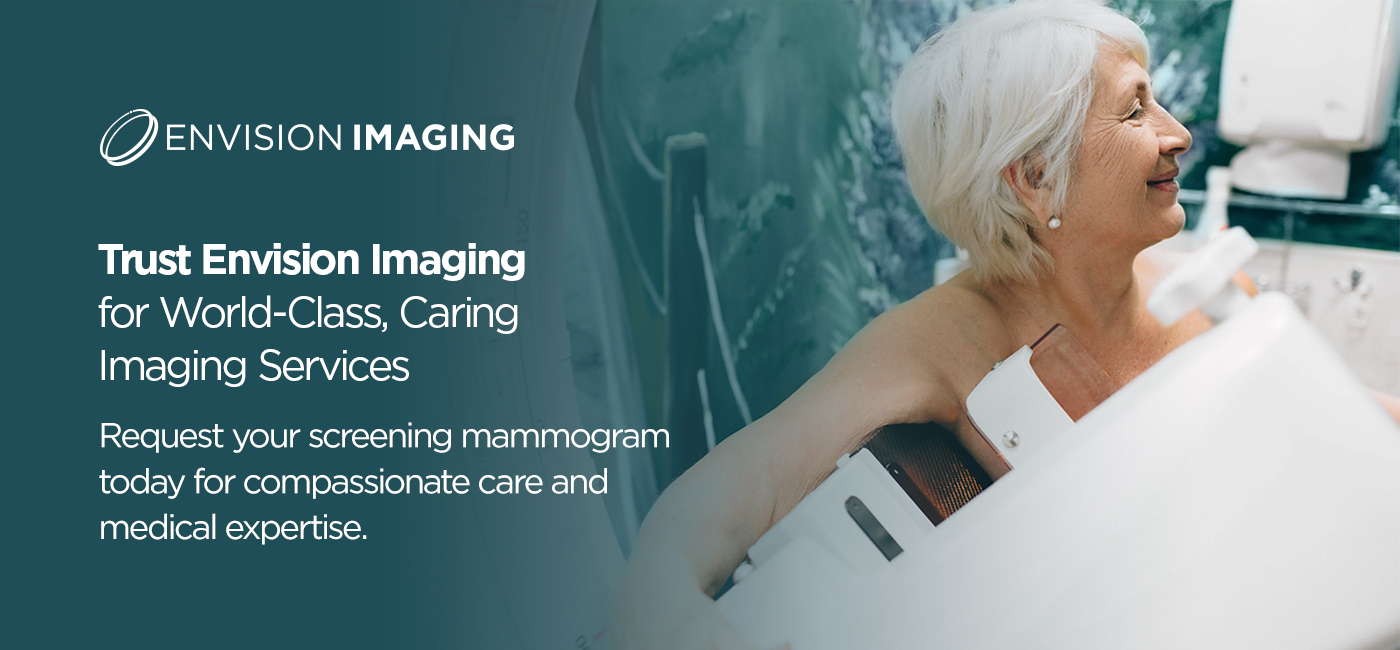Mammogram Myths
Mammogram Myths
For women over the age of 40, mammograms are highly recommended as critical preventive care. However, many women are anxious about going in for the procedure. They may worry about discomfort, imaging results or other concerns even as their physicians recommend they receive a mammogram. If you’re nervous about getting a mammogram done, there’s good news.
Many myths surround the imaging process, but the reality is that mammograms are safe and effective. With a trusted care provider, you can have an imaging experience that prioritizes your comfort while helping protect your health long-term.
So what are some of the myths about mammograms? We’re going to take a look at some of the prevalent ideas that can cause anxiety and help refute them so you can have peace of mind as you go to get this potentially life-saving procedure. Read on to explore the truths behind these myths.
1. Mammograms Are Painful
The mammogram imaging process involves compression of each breast with the testing equipment to detect subtle abnormalities. Some women may experience minor discomfort more than others, depending on their situation. They may be more sensitive during certain times in their menstrual cycle, for example. However, many women do not experience any discomfort. The experience is also very brief, a bit like the quick moment of discomfort from a vaccination.
If you’re worried the procedure will hurt, it might help to understand the process better. During the mammogram, a technologist will put each breast between two plastic imaging plates, one at a time. Images will be gathered for a radiologist to evaluate later for any abnormalities. The process will be fast and seamless.
Should you have concerns of more severe pain from your mammogram, talk with your doctor and imaging technologist. They may be able to identify a more extensive issue related to ligaments or muscles that could help reduce the pain.
2. Mammograms Are Expensive
Some women may worry that having a mammogram will cost too much. However, because this procedure is considered critical to your preventive care, most types of health insurance provide full coverage for yearly imaging. If you need other insurance options, you can look at Healthcare.gov for trusted marketplace plans. These schemes will cover mammograms yearly for any woman over 40, and you won’t need coinsurance or a copayment to get the procedure.
3. Mammograms Are Unsafe
Because mammograms use radiation, you may wonder if getting the procedure is safe for you. In reality, the imaging process uses minimal radiation and is entirely within safe medical levels. The radiation for one mammogram is significantly less than the typical background radiation someone might encounter in just one week on everyday activities.
A mammogram is a screening tool, so it is subject to rigorous standards and regulations by the American College of Radiology, the Food and Drug Administration (FDA) and several other governing bodies. When you work with Envision Imaging, you can be confident that we’ll provide imaging services in full compliance with regulatory agencies.
4. Mammograms Are Only for Women With a Family History of Cancer
For many types of cancer, family history is a significant factor influencing whether people are at higher risk and need monitoring. However, breast cancer is widely prevalent among many women, and a lack of family history does not rule out risk. About 85% of women today have developed cancer without having it in their families.
Even if your siblings, mother, aunts or grandmother haven’t gotten cancer, you can’t predict what will happen in your body. Because the risk of breast cancer is so high, detecting it early is crucial to effective treatment. Today, 1 in 8 women will get breast cancer in their lifetime, and that number continues to increase.
Some women may think they don’t need a mammogram because they believe they are unlikely to get it. Sadly, however, all women are at risk, and it’s essential to take the proper preventive measures. With yearly mammograms, you can dramatically improve your outlook for breast cancer and ensure you can detect any abnormalities early.
5. Mammograms Can Only Be Scheduled By a Doctor
In some cases, women feel they can’t get a mammogram because their doctor hasn’t prescribed one. You don’t need to have your doctor order a mammogram for you. After 40, you’re recommended to have a yearly mammogram even if your physician forgets to remind you. Each year, you can make a self-request to schedule a mammogram to help protect your health.
6. Mammograms Can’t Help
Some people fear that a mammogram won’t help if they do have cancer because it can’t prevent it. In reality, mammograms are powerful tools to catch cancer at a far earlier stage. By helping physicians identify cancer sooner, mammograms empower women to get immediate treatment and significantly increase success rates.
Regular mammograms can detect cancer years before a lump or other irregularity can be identified. Getting mammograms can help you detect potential health risks significantly sooner and dramatically increase treatment success rates. Studies have demonstrated that mammograms have contributed to widespread increases in survival rates for breast cancer patients.
Keep in mind that all irregular findings are not cancer — it’s natural to be nervous, but your medical team will help ensure you get prompt and accurate results from your imaging.
7. Mammograms Are Inaccurate
Indeed, mammograms cannot provide perfect imaging every time, but they are highly accurate tools to offer critical insights for patients and their healthcare providers. If cancer is present, mammograms are highly successful in detecting the abnormalities.
When you get regular, yearly imaging, your care providers can establish a baseline and more easily notice subtle changes over time.
8. Mammograms Take Too Much Time
Day in and day out, you have a busy schedule, and it might feel like fitting in a mammogram isn’t worth it. However, the procedure is relatively short and can fit around your other commitments. Generally, the entire appointment lasts 20 to 30 minutes, and the imaging process itself is only a few minutes long. To protect your health and potentially save your life, that time is worth spending at the appointment.
Trust Envision Imaging for World-Class, Caring Imaging Services
If you need to find the right place for trusted imaging services, Envision Imaging delivers top-quality services in a caring, patient-centric atmosphere. Our goal is to ensure the best possible service for our clients from our first interaction with them. We consistently go above and beyond to help protect their health, ensure their quality of life and keep them as comfortable and reassured as possible throughout the process.
Browse our locations to request your next diagnostic imaging appointment. Our world-class facilities, compassionate care and accurate results ensure a pleasant and reliable experience.
Call To Schedule Your Appointment
Sources
https://www.healthcare.gov/preventive-care-women/
https://www.breastcancer.org/symptoms/understand_bc/statistics
https://www.cancer.org/cancer/breast-cancer/about/how-common-is-breast-cancer.html




